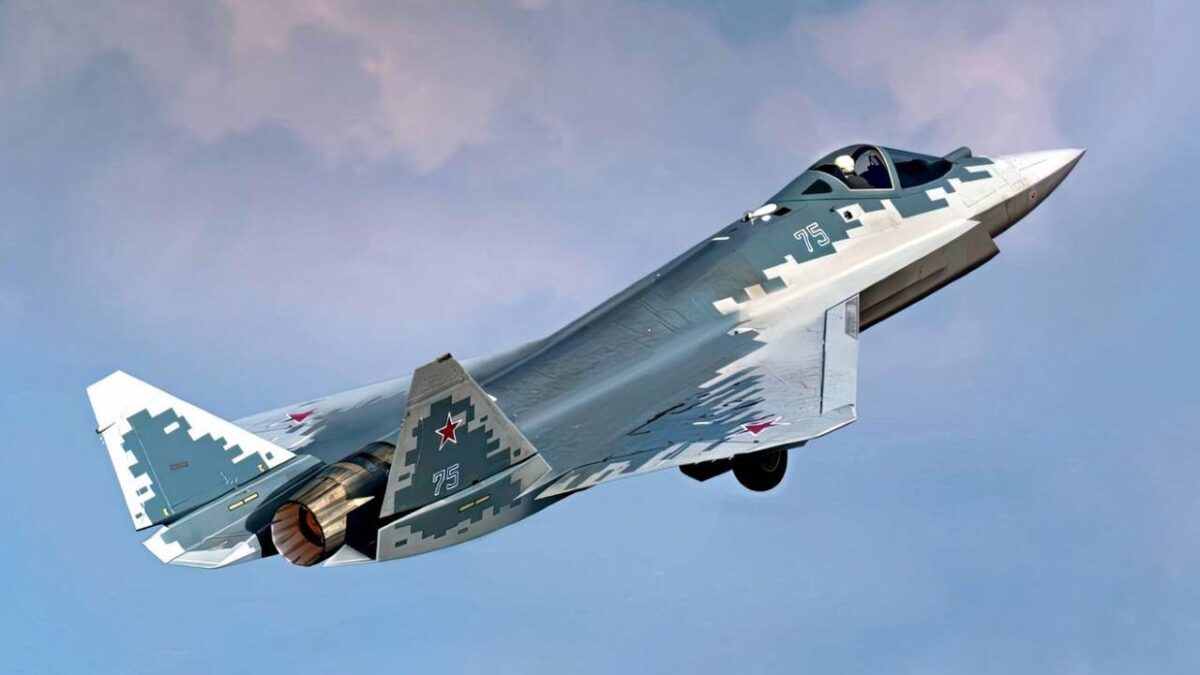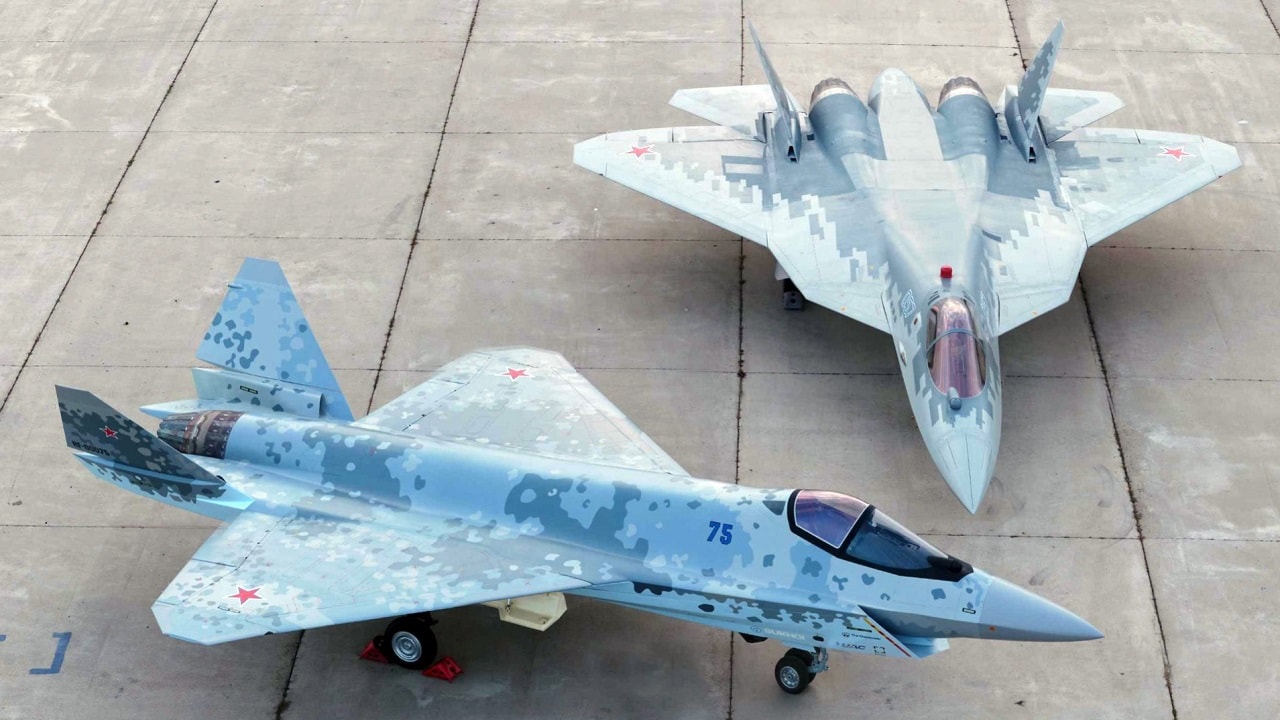Before the war in Ukraine started, the prevailing belief among nearly all military analysts was that Russia, with much more advanced weapons and equipment, would sweep across Ukraine and capture the country within weeks (see our video on the Su-57 fighter below).
But that hasn’t happened.
As a result, Russian forces have suffered horrible casualties and a considerable loss of weapons and equipment. While there is a multitude of reasons why this has happened, including poor intelligence, overconfidence, lack of training for the forces, low morale, and a warmer winter that forced their troops to remain road-bound, other situations came to light.
One such reason was that Moscow’s advanced weapons – ones that they’ve touted as equal or better than anything that the U.S. or the West has, in an attempt to generate overseas sales – are simply as good as advertised. In fact, many of Russia’s advanced weapons are not as advanced as stated.
So, why do Russia’s advanced weapons fail? Over the last few decades, Russia has tried to build new fighter jets, stealth aircraft, new bombers, and many other platforms to keep up with America. Again, there are several reasons why, as we take a look at their advanced weapons and why they don’t live up to the hype.
Putin’s Quest For Imperial Conquest Hurt Military Modernization
Putin came to power in 1999 and he has held onto it for nearly 25 years in no small part by having a state-run government news media where he controls the narrative. Thus, he remains popular with the people as they only receive the Kremlin’s version of events. The positive news and events without any free reporting.
But as he openly touts his lamenting of the fall of the former Soviet Union and himself as a new Peter the Great, his aggressiveness has hindered Russia’s development of advanced weaponry.
He has prioritized political goals over military objectives. Russia’s economy wasn’t as robust as he advertised, and yet he continued the use of Hybrid Warfare, a tactic from the Soviet Union days, because Russia’s economy can’t withstand a prolonged war with NATO and the West, so this economizes its use of overt military force. And part of that strategy is the threat of nuclear weapons.
Putin’s press secretary Dmitry Peskov issued a rather blunt warning. “Well, we have a concept of domestic security, and it’s public,” Peskov said to CNN. “You can read all the reasons for nuclear arms to be used. So if it is an existential threat, a threat for our country, then it can be used in accordance with our concept.”
The inevitable economic sanctions from Russian aggression drive up their goals of exporting weapons to the rest of the world.
Russian Weapons Use American Chips Inside
With the economic sanctions set forth due to Russian aggression, Russians have been affected. Sanctions have cut their ability to produce replacement parts and equipment; one of the more startling effects has been the amount of American and European technology that goes inside Russian weapons.
Back in June, American investigators working with the Ukrainian intelligence service inspected as much of Russian weapons as they could find. Nearly all had Western technology, such as microchips, circuit boards, engines, antennae, and other equipment.
Since the war began and sanctions levied, Commerce Secretary Gina Raimondo was asked if the chip shortage was crippling Moscow’s ability to produce new weapons and equipment, and she answered, “an unqualified yes.“
“U.S. exports to Russia in the categories where we have export controls, including semiconductors, are down by over 90 percent since Feb. 24,” she added. “So that is crippling.”
Russian “Advanced” Weapons Aren’t So Advanced
Many of Russia’s advanced weapons just don’t perform as advertised. Russia touted the SU-57 as a “fifth-generation stealth fighter.” But in an excellent piece on Sandboxx News, Alex Hollings asked the legitimate question, “is the Su-57 the worst stealth fighter on the planet?”
From radar cross sections that put it on par with the 1980s FA-18 Hornet, the engines needed to provide the stealth mode still haven’t been delivered, and the Russian Aerospace Forces have been forced to use the Saturn AL-41F1 engine also found in the forth-generation Su-35S. The result has been less performance and a loss of stealth.
Moscow claimed the sensor and avionics package is comparable to the F-35 Joint Strike Fighter, but most aviation analysts believe this is nothing more than the typical Russian bluster. Russia has been thought to produce four Su-57s; one crashed before it could be delivered. That would leave just three in active service.
The Kh-101 air-launched cruise missile (ALCM) has been notorious for its repeated failures in long-range attacks against Ukrainian targets. Back in March, a Defense Department official was quoted as saying, “either they’re failing to launch, or they’re failing to hit the target, or they’re failing to explode on contact.”
The T-72 main battle tanks have an inherent flaw in the design due to their auto-loading cannon, which has proved since the first Gulf War. I wrote about the flaws of Russian tank design back in May.
The Uran-9 robotic tank was said to be an evolutionary design for infantry support. It is armed with a 30-mm automatic cannon, anti-tank guided missiles, and flamethrowers from Shmel. Moscow said it could operate nearly 2 miles from the controller. That was utterly overstated.
The Russians tested it in Syria, and it performed terribly. Once the tank was out of the line of sight from the controller, it lost the signal. It had issues firing the 30mm cannon and could not fire on the move due to its sight not being stabilized. Also, the tracks are of low reliability and need frequent field repairs.

Su-75 artist rendition.
This is not the end of the list, but it portrays an accurate look at Russian advanced weapons.
The outlook doesn’t look promising for Moscow; the Ukrainians have fought them to a standstill and are conducting a counter-offensive in the south around Kherson. Russia’s main battle tank formations have been decimated, and they are issuing ancient T-62 tanks to armored formations as well as other equipment. The myth of Russian power has been brought into the clear.
Expert Biography: Steve Balestrieri is a 1945 National Security Columnist. A proven military analyst, he served as a US Army Special Forces NCO and Warrant Officer in the 7th Special Forces Group. In addition to writing for 19fortyfive.com and other military news organizations, he has covered the NFL for PatsFans.com for over 11 years. His work was regularly featured in the Millbury-Sutton Chronicle and Grafton News newspapers in Massachusetts.

